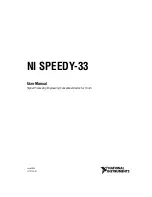
© Confidential
Page: 46 / 97
This document is the sole and exclusive property of WAVECOM. Not to be distributed or divulged without prior
written agreement.
WM_PRJ_Q2686_PTS_001-010
June 30, 2009
Q2686 Wireless CPU
®
3.11
Analog Audio Interface
Two different microphone inputs and two different speaker outputs are
supported. The Q2686 INSIM Wireless CPU® also includes an echo
cancellation feature, which allows hands-free function
In some cases, ESD protection must be added on the audio interface lines.
3.11.1
Microphone Features
The connection can be either differential or single-ended but using a differential
connection in order to reject common mode noise and TDMA noise is strongly
recommended. When using a single-ended connection, be sure to have a very
good ground plane, a very good filtering as well as shielding in order to avoid
any disturbance on the audio path.
The gain of MIC inputs is internally adjusted and can be tuned using an AT
command.
Both can be configured in differential or single ended.
The MIC2 inputs already include the biasing for an electret microphone
allowing an easy connection.
3.11.1.1
MIC1 Microphone Inputs
By default, the MIC1 inputs are single-ended but it can be configured in
differential.
The MIC1 inputs do not include an internal bias . The MIC1 input needs to
have an external biasing if an electret microphone is used.
AC coupling is already embedded in the Wireless Microprocessor®.
Equivalent circuits of MIC1
DC equivalent circuit
AC equivalent circuit
MIC1P
MIC1N
Z1
Z1
GND
MIC1P
MIC1N
DC
Blocked
















































